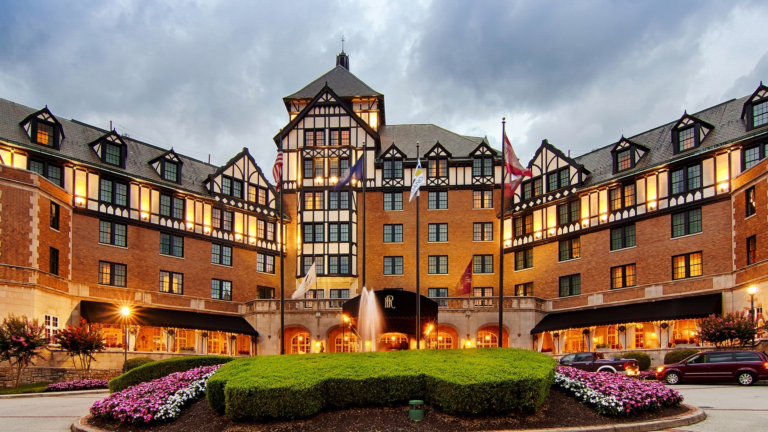Will there be another stimulus bill? When will it be passed and what will it look like? Unfortunately, like most of America, we don’t have the answer to these questions. But amid what recently seems like an irreconcilable partisan divide, there are still issues that Democrats and Republicans can and should agree on in such a bill. Garnering strong support from both sides of the aisle, the Federal Historic Tax Credit is one of America’s longest continuous economic policies but one of the least well known. It is perhaps the most effective economic development incentive in our country’s history, and BW&A expects it to play a crucial role in our economic recovery. As of 2019, with over 45,000 completed projects since its enactment in 1976, the program has leveraged over $162 billion in private investment in and generated about 2.7 million jobs.
But is this just a tool for big city developers to turn larger profits?
No. Many projects involve rehabilitation of abandoned or underutilized buildings, and are critical towards revitalizing smaller, rural, and economically depressed communities. Based on data from NPS, 51% of HTC projects in 2018 were located in low- and moderate-income census tracks, and 75% were located in economically distressed areas. Over 40% of HTC projects in the last 15 years have been located in communities with populations of less than 25,000. Historic rehab also creates more jobs than new construction, with costs averaging 60% labor and 40% materials, compared to new construction which averages 40% labor and 60% materials. In addition to hiring local labor, historic rehabilitation materials are more likely to be purchased locally. As a result, approximately 75% of the economic benefits of these projects remain in these communities.
Ok, but is less tax revenue what is needed right now?
The HTC actually returns more to the Treasury than it costs. The Treasury receives $1.20‐1.25 in tax revenue for every dollar invested via HTCs. According to a National Park Service study, as of 2017, $25.2 billion in federal tax credits have generated more than $29.8 billion in federal tax revenue from HTC projects.
So how did we get here and what can be done?
The HTC was in severe danger of being eliminated in the Tax Cuts and Jobs Act of 2017, but was saved, though greatly weakened. In 2018, a bipartisan group of Senators put forth the Historic Tax Credit Growth and Opportunity Act in an attempt to strengthen the program, though it failed to gain traction. This Spring, the House included a strengthening of the credit in their Infrastructure Bill. This would increase the HTC to 30% from 2020-2024, but reduce it back to 20% from 2024 to 2027. It would have included a temporary extension to rehab period deadlines to ensure projects impacted by the pandemic do not fail to qualify, as well a permanent 30% HTC for smaller projects of $2.5 million or less in HTC qualified expenses (“QRE”). It would also reduce the threshold of investment necessary to qualify for credits (the “Substantial Rehab Test”), make the credit easier to use by non-profits, and other tax treatment changes making these investments more attractive.
The impact this would have on projects is more easily shown with an example.
Case Study: A Developer purchased a historic office building for $5M and Developer plans to convert the building into market-rate apartments. The Developer took out an acquisition loan to pay for 70% of acquisition cost, meaning they now have a $3,500,000 loan to repay or roll into construction financing. Together, hard and soft costs will total $4,500,000, with $4,000,000 being QRE. Having already put in $1,500,000 of equity and without additional cash, Developer now has a total funding need of $8,000,000 (and private equity is usually more expensive than debt). With the 20% HTC, factoring in expected HTC investor pricing and transaction costs, combined with the cash the Developer has left to put into the deal, the Developer may only net approximately $900,000 from HTCs, leaving a $7,100,000 loan. However, the Developer does not pass the HTC Substantial Rehab Test, which stipulates that QRE must exceed the Developer’s adjusted basis in the building. They cannot qualify for HTCs. Letting alone what their loan-to-value and debt-service-coverage ratios might be, at a need of $4-4.5M in debt in addition to the $3.5M of existing debt, Developer now has a very high Loan-to-Cost ratio which might make it difficult to borrow. Developer is stuck. With a 30% tax credit, and lower Substantial Rehab Threshold, Developer would now have a feasible project. These types of scenarios occur far too often, and effectively limit economic development in our communities.
BW&A would like to suggest the following revisions to the HTC to be included in any Stimulus Bill:
- Permanent 30% HTC for certified rehabs of all sizes.
- Return of the 10% HTC for non-certified rehabs of buildings placed in service before 1936.
- Reworking of the Disqualified-Lease restrictions which make it difficult for non-profits to rehab historic buildings
- Reducing the Substantial Rehab Test to 50% of a building’s basis instead of 100%
- Eliminating the HTC Basis Adjustment, bringing more value to HTCs
- Reinstate the ability to claim the HTC in a single year
We encourage all readers to contact your Representatives and Senators regardless of party to support the strengthening of the HTC, which will be invaluable towards turning vacant storefronts back into bustling downtowns as we work our way back from the impacts of Covid-19.
